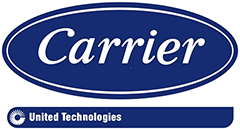atQor is a Microsoft Gold Partner and Dynamics 365 expert with over 20 years of experience in helping businesses of all sizes implement and migrate to Dynamics 365. We have a team of certified Dynamics 365 consultants who can help you with every step of your migration, from planning and assessment to go-live and support.
We understand that migrating to a new ERP system can be a complex and daunting task, but we are here to make it as smooth and seamless as possible. We will work with you to understand your specific needs and requirements, and we will develop a migration plan that is tailored to your specific business.

atQor is a Microsoft Gold Partner and Dynamics 365 expert with over 20 years of experience in helping businesses of all sizes implement and migrate to Dynamics 365. They have a team of certified Dynamics 365 consultants who have the skills and experience to help you with every step of your migration, from planning and assessment to go-live and support.
Dynamics 365 implementation and migration
atQor can help you implement Dynamics 365 from scratch or migrate from your existing ERP system. They have a proven process that includes:
- Assessment: atQor will assess your current business needs and requirements to determine the best way to implement Dynamics 365.
- Design: atQor will design a solution that meets your specific needs and requirements.
- Development: atQor will develop the solution and test it to ensure that it meets your expectations.
- Deployment: atQor will deploy the solution and train your staff on how to use it.
- Support: atQor will provide support after go-live to ensure that you are successful with Dynamics 365.
Dynamics 365 customization and development
atQor can customize Dynamics 365 to meet your specific needs. They have a team of experienced developers who can create custom solutions for your business. atQor can also help you develop new features for Dynamics 365.
Benefits of Dynamics 365 Supply Chain ERP Migration

Dynamics 365 Supply Chain ERP provides real-time visibility into the entire supply chain, allowing businesses to monitor inventory, track shipments, and manage procurement processes more effectively.

The ERP system automates and streamlines procurement processes, reducing manual effort and improving efficiency in supplier management, purchase orders, and supplier payments.

Dynamics 365 Supply Chain ERP helps optimize inventory levels by providing accurate demand forecasting, inventory tracking, and automated replenishment capabilities.

The system enables businesses to fulfill customer orders more efficiently by optimizing warehouse operations, improving picking and packing processes, and ensuring timely deliveries.

Dynamics 365 Supply Chain ERP offers advanced demand planning and forecasting capabilities, enabling businesses to make accurate predictions, optimize production, and minimize stockouts.

The ERP system helps streamline production processes, including production planning, scheduling, and tracking, leading to improved operational efficiency and reduced production costs.

Dynamics 365 Supply Chain ERP includes tools for quality control management, ensuring compliance with industry regulations, and maintaining product quality standards.

The ERP system facilitates effective collaboration with suppliers through features like vendor portals, enabling real-time communication, and ensuring smooth supplier relationships.
Services
Dynamics 365 Supply Chain ERP implementation
Data migration to Dynamics 365 Supply Chain
ERP customization and configuration
Business process mapping and optimization
Integration with other systems
User training and support for Dynamics 365 Supply Chain
System testing and quality assurance
Master data management for supply chain processes
Warehouse management system integration
Inventory management optimization
Demand planning and forecasting
Procurement and supplier management
Production planning and scheduling
Quality management and control
Sales order management and fulfillment
Distribution and logistics management
Transportation management system integration
Returns and reverse logistics management
Supply chain analytics and reporting
Business intelligence and dashboard development
Mobile and remote access solutions for supply chain processes
IoT and sensor integration for real-time monitoring
Compliance and regulatory requirements management
Supplier collaboration and vendor portals
Cost and profitability analysis
Risk management and mitigation strategies
Why you should consider choosing atQor for Dynamics 365 Supply Chain ERP migration:
Expertise
atQor is a Microsoft Gold Partner and Dynamics 365 expert with over 20 years of experience in helping businesses of all sizes implement and migrate to Dynamics 365. We have a team of certified Dynamics 365 consultants who have the skills and experience to help you with every step of your migration, from planning and assessment to go-live and support.
Comprehensive Solutions
We offer end-to-end solutions for Dynamics 365 Supply Chain ERP migration. We assist in assessing your current ERP system, developing a migration strategy, implementing the migration plan, and providing ongoing support. Our comprehensive approach ensures that all aspects of the migration are handled seamlessly.
Customization and Integration
We understand that each business has unique requirements. We work closely with you to customize and integrate Dynamics 365 Supply Chain ERP to align with your specific business processes. This ensures that the solution is tailored to meet your organization's needs, optimizing efficiency and productivity.
Data Migration and Integration
Migrating from one ERP system to another involves transferring large amounts of data. We have expertise in data migration, ensuring that your data is accurately and securely migrated to Dynamics 365 Supply Chain ERP. We also specialize in integrating the new system with existing applications to maintain data integrity and streamline operations.
Training and Support
We provide training and support to ensure a smooth transition to Dynamics 365 Supply Chain ERP. We offer comprehensive training programs for your staff, equipping them with the necessary skills to effectively use the new system. Additionally, our support team is available to address any issues or questions that may arise post-migration.
Microsoft Partnership
As a Microsoft Partner, we have a strong relationship with Microsoft and access to their resources and support. This partnership ensures that we stay up-to-date with the latest developments and best practices in Dynamics 365 Supply Chain ERP, delivering state-of-the-art solutions to our clients.
Conclusion
Overall, by choosing atQor for Dynamics 365 Supply Chain ERP migration, you can benefit from our expertise, comprehensive solutions, customization capabilities, data migration proficiency, training and support services, and our strong Microsoft partnership. This combination of factors positions us as a reliable and trusted partner for a successful ERP migration.
If you are interested in learning more about our Dynamics 365 Supply Chain ERP migration services, please contact us today. We would be happy to discuss your specific needs and requirements and to develop a migration plan that is tailored to your specific business.
Data Assessment and Preparation:
Migrating to Dynamics 365 Supply Chain ERP involves several steps for data assessment and preparation. Here's an overview of the process:
Identify data sources.
Identify the existing data sources within your current ERP system. This could include databases, spreadsheets, legacy systems, and other sources where your supply chain data is stored.
Define data requirements
Determine the specific data requirements for the Dynamics 365 Supply Chain ERP migration. This includes understanding what data needs to be migrated, what can be discarded, and any additional data that may be required for the new system.
Cleanse and standardize data.
Data cleansing is an important step to ensure data accuracy and consistency. Identify and rectify any inconsistencies, errors, or duplicates in the data. Standardize data formats, naming conventions, and units of measurement to ensure uniformity.
Map data fields.
Create a data mapping document that outlines the mapping of data fields from the source system to the corresponding fields in Dynamics 365 Supply Chain ERP. This document will serve as a reference during the migration process.
Data transformation.
Perform any necessary data transformations to ensure compatibility between the source data and the target system. This may involve converting data types, restructuring data, or applying business rules to meet the requirements of Dynamics 365 Supply Chain ERP.
Data validation.
Validate the accuracy and completeness of the migrated data. Conduct thorough testing and verification to ensure that the data is correctly migrated and can be used effectively in the new system.
These steps are essential for ensuring a successful data migration to Dynamics 365 Supply Chain ERP. By following these steps, you can minimize the risk of data loss or errors, and ensure that your data is ready to be used in the new system.
These steps are essential for ensuring a successful data migration to Dynamics 365 Supply Chain ERP. By following these steps, you can minimize the risk of data loss or errors, and ensure that your data is ready to be used in the new system.
Our Clients
Configuration and Setup:
The first step is to plan and assess your migration. This includes identifying the goals and objectives of the migration, assessing the current system and data to determine the scope of the migration, defining the project timeline, budget, and resource requirements, and identifying key stakeholders and establishing a project team.
The next step is to design the new system. This includes defining the new system architecture and infrastructure requirements, determining the licensing model and selecting the appropriate Dynamics 365 Supply Chain Management edition, deciding whether to deploy the system on-premises, in the cloud, or in a hybrid environment, and identifying any integration requirements with other systems.
The data migration process involves analyzing and cleansing the existing data to ensure its quality and accuracy, mapping the data from the legacy system to the corresponding entities in Dynamics 365, extracting data from the legacy system, transforming it according to the mapping rules, and loading it into Dynamics 365. It is important to perform data validation and reconciliation to ensure the migration was successful.
Once the data has been migrated, you will need to configure and customize Dynamics 365 Supply Chain Management to meet the specific needs of your business. This may involve setting up the basic system configurations, configuring modules specific to your organization's supply chain requirements, customizing the system to meet your unique business processes and requirements, and defining security roles and permissions to control user access to the system.
Dynamics 365 Supply Chain Management can be integrated with other systems, such as CRM, finance, or external applications. This can help to improve data accuracy and visibility, and it can also help to automate processes.
Once the system has been configured and customized, it is important to test and train users. This includes conducting thorough testing of the system to ensure all modules and functionalities are working as expected, developing test scripts and performing various testing scenarios, including unit testing, system testing, integration testing, and user acceptance testing, and providing training to end-users and system administrators to familiarize them with the new system and its features.
The final step is to go-live and provide post-implementation support. This includes planning and executing the go-live cutover process, including data synchronization, final data migration, and system availability, monitoring the system performance and addressing any issues or bugs that may arise, providing post-implementation support to users, addressing questions, and providing additional training as needed, and continuously evaluating and optimizing the system based on user feedback and evolving business needs.




































